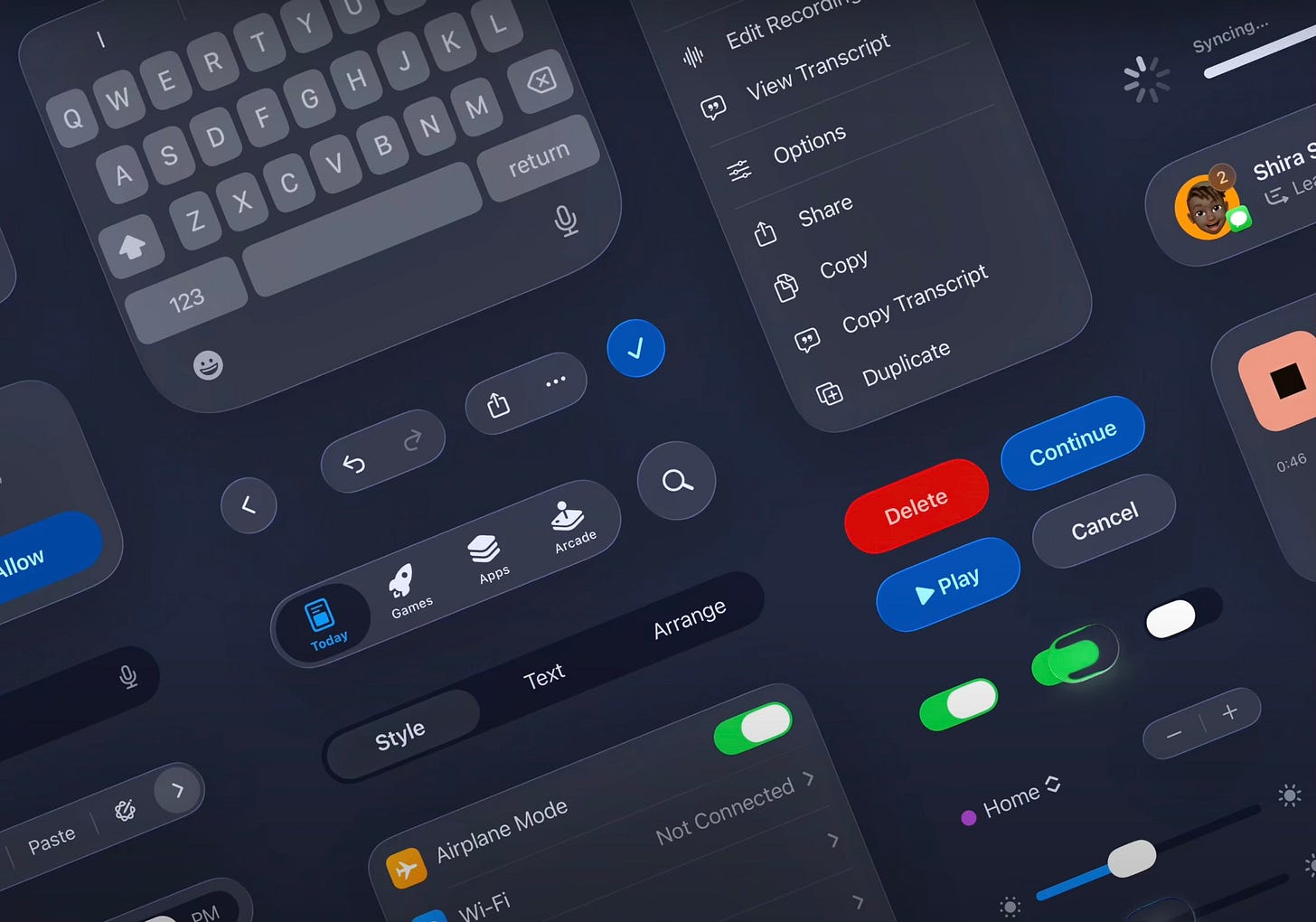🚀 WWDC 2025 for Developers: Apple reveals the Rules of New App Design, AI, and Dev Tools
WWDC25 for Apple Developers - Main Updates
WWDC 2025 just wrapped up—and I’ve spent some time watching the Platform State of the Union.
If you’re a developer (like me), this wasn’t just another Apple keynote. This was a blueprint for the next years of app design, AI integration, and tool-building.
So today, I’m unpacking the biggest announcements and what they really mean for us.
Let’s dive in 👇
🌊 Liquid Glass: Apple's New Living UI
Let’s start with the one thing no one can stop talking about—Liquid Glass. It’s not just pretty. It’s deeply functional.
Apple introduced this new UI design system to replace the static flat look we’ve had for years. Think: depth, transparency, movement—alive UI.
Why it matters:
It responds to light, content, and motion.
Buttons and controls now float above content.
It works automatically with
TabView,NavigationSplitView,Toolbars, and more.Your app inherits it for free in most cases—just recompile in Xcode 26.
What stood out most? The idea that content is king, and UI should only appear when needed. Apple finally nailed that balance.
🧠 Apple Intelligence: AI, but Private and Fast
You’ve probably seen 20+ AI launches this year, but Apple’s take is… different.
Introducing: Apple Intelligence
A fully on-device AI system that’s private, fast, and built directly into iOS, macOS, and visionOS.
Here’s what we get as devs:
The Foundation Models framework (text generation, summarization, tagging)
Guided generation: Get back real Swift
structsfrom promptsTool calling: Let the AI do things inside your app
Streaming output: Responses can update live on screen
No server, no token limits, no privacy headaches
💻 Xcode 26: ChatGPT Built Right In
This one is huge: Xcode now has a coding assistant baked in.
And yes, it’s ChatGPT. And yes, it works out of the box.
You can:
Ask it to create views, tests, or fix bugs
Drop in a UI sketch or describe your layout in plain English
Use a history slider to rewind your conversation
Connect to OpenAI, Claude, or even local models
This is the future of dev work—context-aware pair programming, built right into your IDE.
🧱 SwiftUI & Data: Clean, Fast, Flexible
It’s official: SwiftUI is not “almost ready” anymore. It’s ready.
Here’s what we got:
Rich text editing with
AttributedStringA real WebView for embedded content
3D charts powered by RealityKit
Huge list performance boost (6x faster on macOS!)
Push notifications now work on widgets
Also: SwiftData just got a big upgrade—subclassing, better type support, and cleaner observation.
🥽 visionOS 26: Building for Spatial Is Easier Now
I’ve been experimenting with Vision Pro lately, and this year’s updates make it way more accessible for devs.
New tools let you:
Build volumetric UI layouts with SwiftUI
Anchor objects in 3D space
Convert 2D images into AI-generated 3D environments
Share spatial windows with people in the same room
Use spatial FaceTime personas in your apps
The spatial UI paradigm is still young—but it’s growing fast.
🎮 Bonus: Mac Gaming Is Real Now
Cyberpunk 2077 is now running on MacBook M4 at 60 FPS. Yes, you read that right.
Thanks to Metal 4 and MetalFX, gaming on Mac is no longer an afterthought.
Game devs now get:
Neural rendering via ML shaders
Upscaling, frame interpolation, and denoising
A much improved Game Porting Toolkit
Support for PlayStation VR2 controllers
🧠 App Intents: Your App, Everywhere
Apple also made it easier than ever to make your app feel “built-in.”
App Intents can now:
Appear in Spotlight
Trigger via Control Center
Be used inside Shortcuts, Siri, and Widgets
Work with Visual Intelligence (e.g. image-based search)
It’s like deep linking—but smarter. Think about which parts of your app are worth surfacing outside the app.
What This All Means for Us
WWDC 2025 was not just a set of updates—it was Apple’s vision for the next era of app creation:
UI that feels organic
AI that runs privately
Dev tools that actually help
And a platform that’s finally consistent across devices





